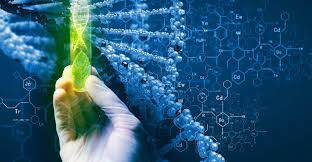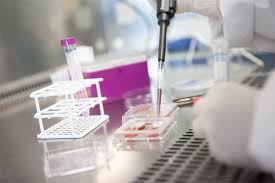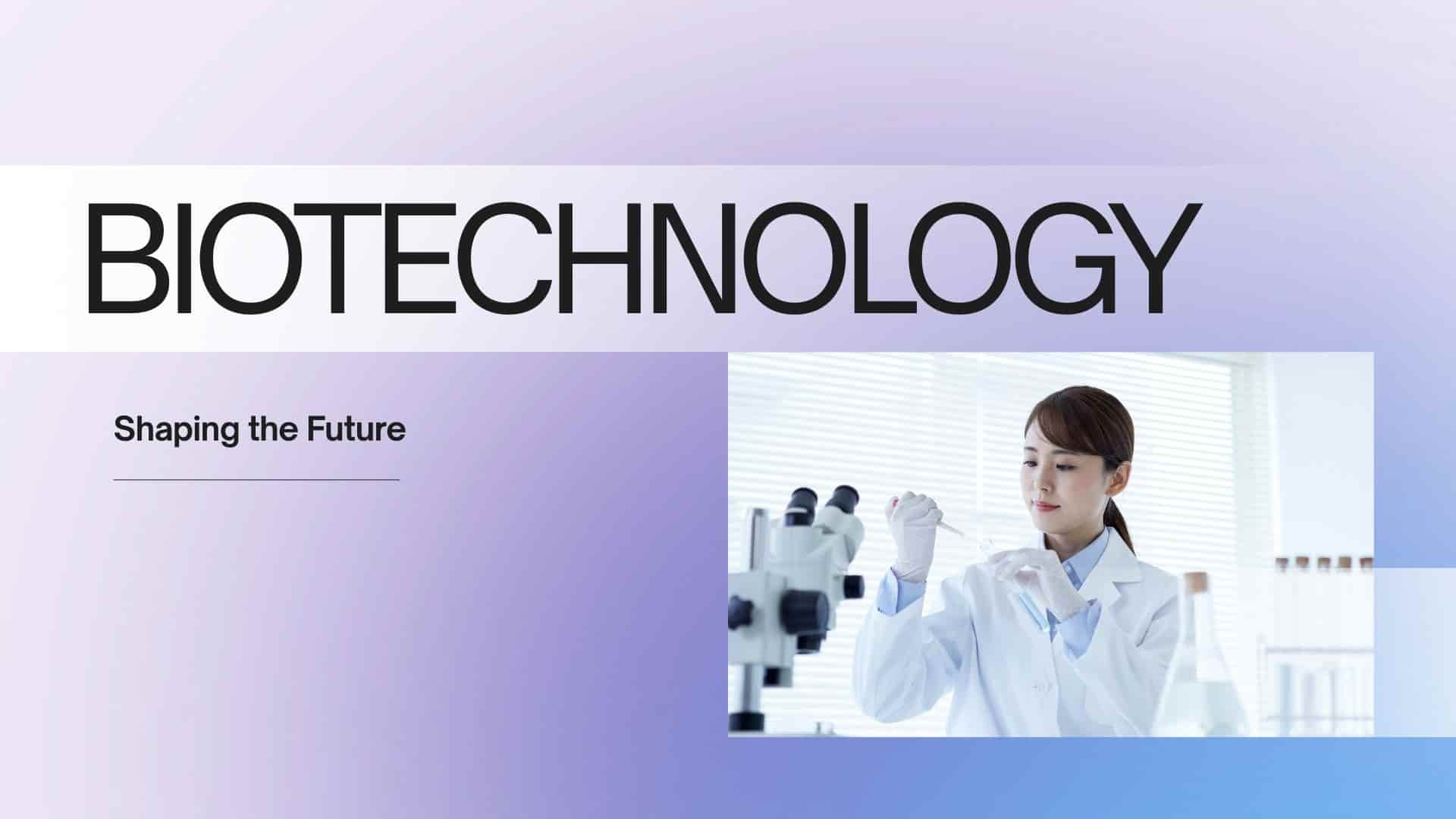The Invisible Revolution:
Have you ever stopped to wonder about the tiny, invisible forces that power our world? Not ghosts or fairies, but something far more incredible: living cells. Imagine a world where we can program yeast to brew life-saving medicine instead of beer, where we can grow leather in a lab without a single cow, and where we can edit the very blueprint of life to cure genetic diseases. This isn’t the plot of a new sci-fi blockbuster; this is the real world, right now, thanks to biotechnology.
The global biotechnology market is projected to skyrocket to a staggering $3.44 trillion by 2030, growing at a breakneck pace of 13.9% every year. But behind that jaw-dropping number are stories of hope, innovation, and solutions to some of humanity’s oldest problems. From the cheese on your pizza and the detergent in your washing machine to the mRNA vaccines that changed the course of a pandemic, biotechnology is the invisible engine quietly revolutionizing everything. So, whether you’re a student, a parent, a grandparent, or just a curious soul, let’s dive into the fascinating world of biology-powered tech and discover how it’s already shaping your daily life and our collective future.
What is Biotechnology?
In its simplest form, biotechnology (or biotech) is the process of harnessing cellular and biomolecular processes to develop technologies and products that help improve our lives and the health of our planet. It’s about using biology to create technology. We’ve actually been doing a primitive form of it for thousands of years—think ancient Egyptians using yeast to brew beer or bake bread. That’s biotechnology at its most fundamental: using living organisms to make a useful product.
Modern biotechnology kicked into high gear in the 20th century with the discovery of the DNA double helix. This gave scientists the instruction manual for life. Suddenly, we could read, edit, and rewrite this code. This led to groundbreaking techniques like genetic engineering and recombinant DNA technology, where a gene from one organism is inserted into another to give it a new trait. This is how we got bacteria to produce human insulin, a revolution that replaced risky animal-based insulin and saved millions of lives with diabetes.
Biotech’s Colorful Branches
The field of biotechnology is so vast that scientists have color-coded it based on its applications. It’s a handy way to understand its incredible scope.
🔴 Red Biotechnology: Medical Marvels
This is the branch most people think of. Red biotechnology is all about medicine and human health. It’s focused on developing new drugs, advanced therapies, vaccines, and diagnostic tools. This includes everything from gene therapy for inherited disorders to growing tissues for regenerative medicine and producing monoclonal antibodies that target cancer cells with pinpoint accuracy.
💚 Green Biotechnology: Agricultural Advances
Green biotechnology applies to agriculture. It aims to make farming more efficient, sustainable, and productive. This includes creating genetically modified (GM) crops that are resistant to pests and droughts, developing biofertilizers to improve soil health, and engineering fruits and vegetables with enhanced nutritional value to fight malnutrition.

⚪ White Biotechnology: Industrial Solutions
Also known as industrial biotechnology, this branch uses enzymes and microorganisms to create bio-based products for industries. It’s about making manufacturing processes cleaner and more sustainable. White biotechnology helps produce biodegradable plastics, biofuels as alternatives to fossil fuels, and enzymes for eco-friendly detergents that work at lower temperatures.
Read more: How Space Technology is Revolutionizing Life- Best 2025
💙 Blue Biotechnology: Aquatic Applications
This is the exploration and use of marine resources. The oceans are teeming with biodiversity, and blue biotechnology seeks to derive new products from aquatic organisms. This includes discovering new medicines from sea sponges, creating sustainable aquaculture feeds, and developing cosmetics from algae.
Table: The Rainbow of Biotechnology Applications
| Color | Focus Area | Key Applications | Example |
|---|---|---|---|
| Red | Healthcare | Pharmaceuticals, Vaccines, Gene Therapy | Synthetic human insulin |
| Green | Agriculture | GM Crops, Bio-pesticides, Biofuels | Drought-resistant corn |
| White | Industrial | Bioplastics, Biofuels, Enzymes | Enzyme-based laundry detergents |
| Blue | Marine | Aquaculture, Cosmeceuticals, Novel Foods | Omega-3 supplements from algae |
Biotech in Your Daily Life
You might not realize it, but you interact with biotechnology products every single day. It’s seamlessly woven into the fabric of modern life:
- The Food You Eat: That aged cheese? Made with enzymes (rennet) often produced through biotechnology. The corn in your tacos? Likely a variety developed to resist pests, reducing the need for chemical pesticides. Even the vegetarian burger that “bleeds” uses a protein from soybeans engineered with yeast.
- The Clothes You Wear: Have a shirt made from lyocell or Tencel? That material is made from wood pulp broken down by environmentally friendly processes. Some companies are even developing lab-grown leather and spider silk from fermented yeast for textiles.
- The Products You Use: Those laundry detergents that work wonders in cold water? They contain enzymes engineered to break down stains at lower temperatures, saving you money on energy bills. Bio-based plastics are also starting to appear in packaging, offering a more sustainable alternative to petroleum-based plastics.
Read more: Biotechnology | Definition, Examples, & Applications
Medical Marvels of Biotech
The impact of biotechnology on medicine is nothing short of revolutionary. It has moved us from treating symptoms to actually curing diseases at their root cause.
- Precision Medicine: This is the opposite of a one-size-fits-all approach. By understanding a patient’s genetic makeup, doctors can prescribe drugs and treatments that are more likely to be effective for them specifically, reducing side effects.
- Gene Therapy and CRISPR: This is the cutting edge. Technologies like CRISPR-Cas9 act like molecular scissors, allowing scientists to precisely edit genes. This holds the potential to cure inherited genetic disorders like sickle cell anemia and cystic fibrosis by correcting the faulty gene itself.
- Advanced Diagnostics: Biotechnology has given us rapid, highly accurate diagnostic tests. The PCR tests used for COVID-19 are a prime example, capable of detecting tiny amounts of viral genetic material. This allows for earlier intervention and treatment.
- Biologics and Vaccines: Unlike traditional drugs made from chemicals, biologics are complex medicines made from living organisms. This category includes the mRNA vaccines, which teach our cells how to make a protein that triggers an immune response, providing powerful protection.

The Future of Biotech
The pace of innovation in biotechnology is accelerating. Here’s a glimpse of what’s on the horizon:
- Synthetic Biology: This takes genetic engineering to a whole new level. Instead of just editing a few genes, scientists aim to design and build entirely new biological parts, devices, and systems. Imagine microbes engineered to eat plastic pollution or produce clean biofuels efficiently.
- Lab-Grown Meat: To address the environmental impact of livestock farming, companies are culturing real meat from animal cells. This technology promises the taste and texture of meat without the ethical and environmental downsides.
- Microbiome Therapeutics: We’re learning that the trillions of bacteria in our gut (the microbiome) play a huge role in our health. Future biotechnology treatments may involve engineering these microbial communities to treat everything from obesity to depression.
Ethics and Challenges
With great power comes great responsibility. Biotechnology raises important ethical questions we must address as a society.
- GMO Debates: The use of genetically modified organisms (GMOs) in food remains controversial, with debates centered on long-term health effects, environmental impact, and corporate control of seeds.
- Gene Editing Ethics: While editing genes in somatic (body) cells to cure disease is widely supported, the idea of editing germline (sperm or egg) cells, which would pass changes to future generations, is a major ethical frontier with significant concerns about unintended consequences and “designer babies.”
- Access and Equity: Advanced biotech treatments are often extremely expensive. Ensuring that these life-changing innovations are accessible to all, not just the wealthy, is a critical challenge.
Conclusion: A Biotech Future
Biotechnology is far more than a niche scientific field; it is a transformative force that is already deeply embedded in our lives, from the food we eat to the medicines that heal us. It offers powerful tools to tackle humanity’s greatest challenges, including disease, hunger, and environmental degradation. While it presents complex ethical dilemmas that require careful public discourse and smart regulation, its potential for good is immense. As we continue to learn the language of life, we unlock new possibilities for creating a healthier, more sustainable, and more prosperous future for all. The invisible revolution is here, and it’s only just beginning.
Read more: What is Biotechnology? | BIO
Frequently Asked Questions
What is biotechnology in simple words?
Biotechnology is using living things (like cells, bacteria, or enzymes) to create or improve products and technologies. It’s like harnessing the power of biology to solve problems, from making medicine and greener fuel to creating more robust crops.
What are some examples of biotechnology?
Common examples include using yeast to bake bread and brew beer, genetically modified crops like pest-resistant corn, bacteria engineered to produce human insulin for diabetes, and the mRNA technology behind modern COVID-19 vaccines.
Is biotechnology safe?
Most modern biotechnology products undergo rigorous safety testing by agencies like the FDA and EPA. While generally considered safe, some applications, like GMOs in food and human gene editing, continue to be debated for their ethical and long-term environmental implications.
What is the difference between biotechnology and genetic engineering?
Genetic engineering is a specific technique within biotechnology. It involves directly manipulating an organism’s genes. Biotechnology is the broader field that includes genetic engineering but also many other processes, like using naturally occurring enzymes or fermenting microorganisms.
What are the benefits of biotechnology?
Biotechnology helps create life-saving medicines, develop sustainable agricultural practices to feed a growing population, produce eco-friendly industrial materials, and drive innovative solutions to global health and environmental challenges.

